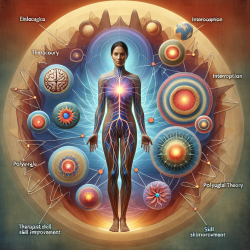Child and adolescent mental health (CAMH) services face significant challenges, especially in resource-scarce settings. A recent study, Identifying multilevel and multisectoral strategies to develop a Theory of Change for improving child and adolescent mental health services in a case-study district in South Africa, provides valuable insights and strategies that practitioners can adopt to enhance CAMH services. This blog outlines key takeaways from the study and practical steps for implementation.
Understanding the Theory of Change (ToC)
The Theory of Change (ToC) is a participatory approach that maps out the causal pathways linking inputs, activities, and outcomes. It helps identify fundamental factors that predict the success or failure of interventions. In the study, stakeholders from health, education, and social development sectors collaboratively developed a ToC model to improve CAMH services in a resource-constrained district in South Africa.
Key Strategies for Practitioners
The study identified several multilevel and multisectoral strategies to overcome bottlenecks in CAMH services:
- Community Awareness Programs: Develop and implement user-friendly CAMH psychoeducation and screening tools to strengthen mental health literacy and facilitate early identification at the community level.
- Intersectoral Collaboration: Establish an intersectoral working group to facilitate collaboration among different sectors, including health, education, and social development.
- Referral Systems: Create a functional district CAMH referral system to ensure appropriate and timely referrals to specialized care.
- Youth-Friendly Care Packages: Develop and distribute youth-friendly CAMH care packages to provide comprehensive support and treatment options.
Implementation Steps
To effectively implement these strategies, practitioners should consider the following steps:
- Engage Stakeholders: Collaborate with key stakeholders across multiple sectors to co-develop and refine the ToC model. Regular workshops and meetings can facilitate this process.
- Train and Educate: Provide training for educators, health workers, and community volunteers on CAMH identification, screening, and referral pathways.
- Develop Resources: Create and distribute educational materials, screening tools, and care packages tailored to the needs of the community.
- Monitor and Evaluate: Continuously monitor the implementation process and evaluate the effectiveness of the strategies. Use feedback to make necessary adjustments.
Encouraging Further Research
While the study provides a robust framework for improving CAMH services, further research is essential to adapt these strategies to different contexts. Practitioners are encouraged to conduct local needs assessments and engage in participatory research to identify context-specific challenges and solutions.
To read the original research paper, please follow this link: Identifying multilevel and multisectoral strategies to develop a Theory of Change for improving child and adolescent mental health services in a case-study district in South Africa.










